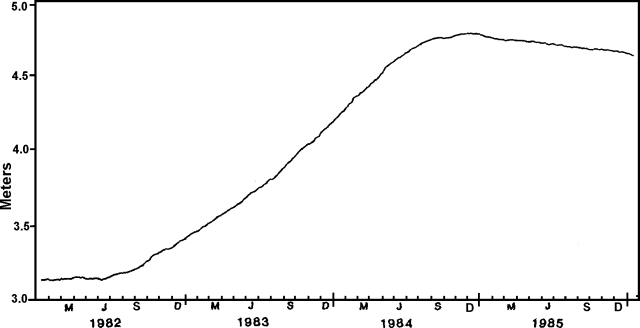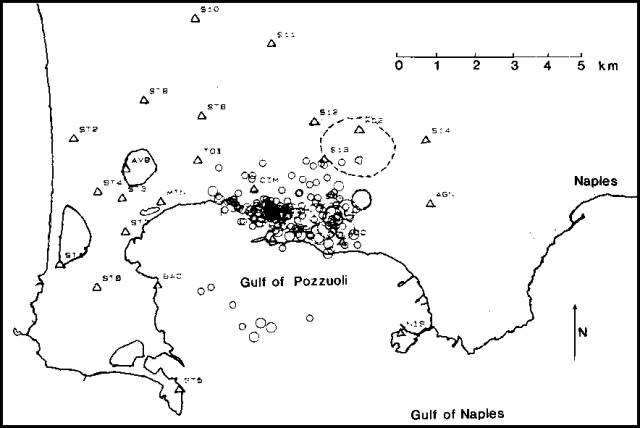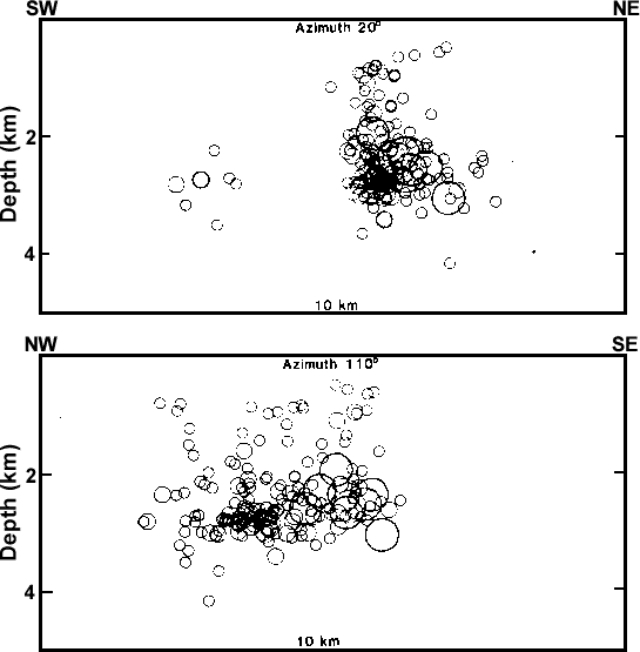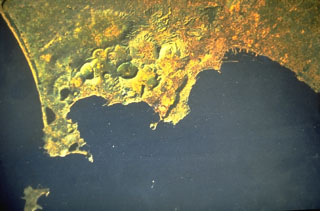Report on Campi Flegrei (Italy) — November 1984
Scientific Event Alert Network Bulletin, vol. 9, no. 11 (November 1984)
Managing Editor: Lindsay McClelland.
Campi Flegrei (Italy) Uplift stops in October, but resumes in November
Please cite this report as:
Global Volcanism Program, 1984. Report on Campi Flegrei (Italy) (McClelland, L., ed.). Scientific Event Alert Network Bulletin, 9:11. Smithsonian Institution. https://doi.org/10.5479/si.GVP.SEAN198411-211010
Campi Flegrei
Italy
40.827°N, 14.139°E; summit elev. 458 m
All times are local (unless otherwise noted)
"Activity at Campi Flegrei declined in October. The velocity of uplift, as measured by the tide gauge at Pozzuoli, was null for the entire month and seismic activity was very low. This was the first substantial decrease in activity observed since the beginning of the crisis in the summer of 1982 (figures 7 and 8). A new increase in seismic activity was observed during the first week of November with a M 2.7 earthquake on the 5th. During the second week, uplift started again with a mean velocity of 1 mm/day. On 8 November, events of magnitude 3.2, 3.2, 2.8, and 3.3 occurred in the Gulf of Pozzuoli. Other events occurred on the 10th (M 2.9) and 11th (M 3). Minor events occurred during the third week, but uplift velocity remained at 1 mm/day. During the last week in November, uplift velocity rose to 2.5 mm/day with two earthquakes (M 3.1, M 2.9) on 26 November and several others of lower magnitude.
 |
Figure 8. Ground movements at Campi Flegrei measured by the tide gauge in Pozzuoli Harbor, January 1982-December 1985. Courtesy of Roberto Scandone. |
"The temperatures of fumaroles in Solfatara Crater remained constant at 156°C. A new fumarolic vent opened in the crater during the night of 16-17 November with a violent emission of steam.
"Figure 9 shows the distribution of the 181 best-located events between January 1983 and May 1984. These events were recorded at more than 12 stations and have an (rms) less than 0.1. The figure shows an alignment of the January 1983-May 1984 epicenters on land along a N110°E direction with a clustering of the stronger earthquakes around Solfatara Crater. The earthquake area is limited on the E by the remains of the old Agnano Crater and on the west by Monte Nuovo Crater. A striking feature is that the earthquakes occur mainly along the coastline and the remains of an old marine terrace which uplifted some 40 m about 5,000 years BP.
 |
Figure 9. Distribution of the epicenters of the 181 best-located seismic events at Campi Flegrei, January 1983-May 1984. Triangles mark seismic stations. Courtesy of OV. |
"Figure 10 shows two perpendicular sections of the same data set. The N20°E section shows two clusters of events, on land and in the sea, with an aseismic area in the middle. The same section shows the rather abrupt boundary between the seismically active areas on land and in the sea. Most of the earthquakes occur between 2 and 3 km depth, but these data are still preliminary due to the uncertainties of the velocity model."
 |
Figure 10. Epicenters in figure 9 projected onto cross sections oriented N20°E, left, and N110°E, right. Courtesy of OV. |
Geological Summary. Campi Flegrei is a 13-km-wide caldera that encompasses part of Naples and extends to the south beneath the Gulf of Pozzuoli. Episodes of significant uplift and subsidence within the dominantly trachytic caldera have occurred since Roman times. The earliest known eruptive products are dated 47,000 years BP. The caldera formed following two large explosive eruptions, the massive Campanian ignimbrite about 36,000 BP, and the over 40 km3 Neapolitan Yellow Tuff (NYT) about 15,000 BP. Following eruption of the NYT a large number of eruptions originated from widely scattered subaerial and submarine vents. Most activity occurred during three intervals: 15,000-9,500, 8,600-8,200, and 4,800-3,800 BP. The latest eruption were in 1158 CE at Solfatara and activity in 1538 CE that formed the Monte Nuovo cinder cone.
Information Contacts: G. Luongo and R. Scandone, OV; F. Barberi, Univ. di Pisa.

